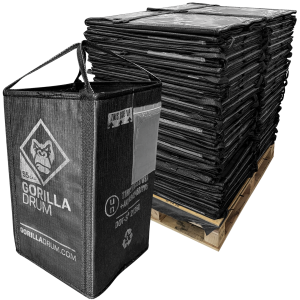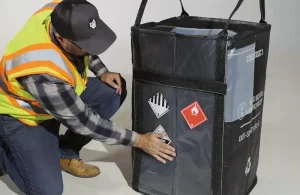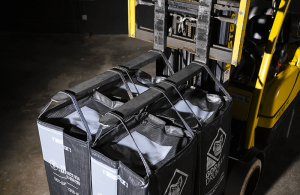When handling, storing, or transporting hazardous materials, safety is more than a priority—it’s a legal requirement. Every container used to store or ship dangerous goods must meet strict standards to ensure that materials are safely contained, preventing leaks, spills, or contamination. Two of the most important certifications in this process are the United Nations (UN) rating and the Department of Transportation (DOT) approval.
These certifications define the performance, testing, and labeling standards that all hazmat drums must meet before being used for regulated materials. Understanding what these ratings mean and how they apply to your operations ensures that your facility remains compliant while keeping employees, property, and the environment safe. Gorilla Drum provides innovative, compliant containment solutions designed for modern industrial needs, offering superior strength and sustainability without sacrificing safety.
What Is a UN-Rated Drum?
 A UN-rated drum is a container that has been tested and certified to meet international standards for the safe storage and transport of hazardous materials. The “UN” marking indicates that the drum complies with the United Nations Recommendations on the Transport of Dangerous Goods—commonly referred to as the Orange Book.
A UN-rated drum is a container that has been tested and certified to meet international standards for the safe storage and transport of hazardous materials. The “UN” marking indicates that the drum complies with the United Nations Recommendations on the Transport of Dangerous Goods—commonly referred to as the Orange Book.
These regulations establish global safety standards for packaging, labeling, and transporting hazardous substances. Containers that earn this rating are approved for shipping hazardous materials by air, sea, rail, or road, making them a critical component of global logistics. The goal of this certification is to ensure that hazardous materials remain fully contained, even under extreme conditions such as impact, vibration, or temperature changes during transport.
Each UN-rated hazmat drum undergoes a series of rigorous performance tests before certification. These tests simulate real-world conditions to verify the drum’s resistance to pressure, puncture, and leaks. The standards apply to a wide range of materials—everything from flammable liquids and toxic chemicals to corrosive substances and solid waste.
Because of their reliability and traceable compliance markings, UN-rated containers are universally recognized by carriers, shippers, and regulatory authorities worldwide. This makes them essential for any business engaged in the handling or export of hazardous materials, ensuring both safety and legal compliance.
Purpose of the UN Rating
The UN rating system ensures that hazmat drums can withstand the stresses of handling and transport under real-world conditions. This includes drop impacts, stacking pressure, and environmental exposure. The testing process verifies that the drum will not leak, rupture, or deform when subjected to the mechanical and chemical stresses typical of industrial operations.
UN rated hazmat drums are often used for:
-
Storing and transporting flammable or combustible liquids
-
Containing corrosive chemicals or acids
-
Managing hazardous waste materials
-
Holding industrial byproducts or contaminated solids
Understanding the UN Marking Code
Every UN-rated drum features a permanent code printed or embossed on the container, usually near the top or side. This code includes several elements that describe the container’s type, material, performance level, and certification details.
For example, a typical UN marking might look like this:
UN 1A1/Y1.4/150/23/USA/M1234
Breaking it down:
-
1A1: Indicates a steel, closed-head drum.
-
Y: Denotes packing group II (medium danger).
-
1.4: Represents the specific gravity rating of the material it can hold.
-
150: Indicates hydrostatic test pressure in kilopascals (kPa).
-
23: The year of manufacture.
-
USA: The country where the drum was tested and approved.
-
M1234: The manufacturer’s code or testing lab identification.
This standardized system provides critical information for handlers and inspectors, ensuring that the correct container is used for each material type.
The Role of UN-Rated Drums in Compliance
Using UN rated hazmat drums isn’t optional for regulated materials—it’s required by law. These containers ensure compliance with both international and domestic transport regulations, protecting businesses from potential fines or penalties.
Facilities that handle chemical waste, solvents, or flammable materials rely on UN certified drums to maintain safe operations and meet EPA and DOT requirements. Whether using a 55 gallon hazmat drum, a smaller laboratory container, or a large collapsible drum, the UN rating signifies safety and reliability.
What Makes a Drum DOT Approved?
 While the UN rating ensures international compliance, DOT approval applies to transportation within the United States. The Department of Transportation sets strict guidelines under Title 49 of the Code of Federal Regulations (CFR) for packaging and transporting hazardous materials.
While the UN rating ensures international compliance, DOT approval applies to transportation within the United States. The Department of Transportation sets strict guidelines under Title 49 of the Code of Federal Regulations (CFR) for packaging and transporting hazardous materials.
How a Drum Earns DOT Approval
To be DOT approved, a drum must pass a series of standardized tests, including:
-
Drop Test: Ensures the drum can withstand impacts during handling.
-
Hydrostatic Pressure Test: Confirms that the container can contain liquids under pressure without leaking.
-
Stacking Test: Verifies that drums can be safely stacked during storage or shipment.
-
Vibration Test: Simulates transport conditions to ensure the drum maintains integrity during movement.
These tests demonstrate that DOT approved hazmat containers can handle the physical stresses of shipping hazardous materials safely and securely.
Key Features of DOT Approved Drums
DOT approved drums are constructed from high-quality materials such as steel, polyethylene, or composite plastics. They are designed for long-term durability and chemical resistance, making them ideal for industrial use.
Common features include:
-
Leak-proof closures or seals
-
Reinforced sidewalls for stacking strength
-
Corrosion-resistant linings for chemical compatibility
-
Embossed compliance markings for easy verification
These design elements ensure that the drum can handle harsh conditions while maintaining compliance with transportation regulations.
Differences Between UN and DOT Ratings
Although both systems are closely related, the key difference lies in their jurisdiction and scope. The UN rating system applies internationally and is recognized by countries worldwide. The DOT system enforces similar standards but focuses on compliance within the United States.
In most cases, UN rated hazmat drums are also DOT approved, allowing them to be used for both domestic and international transport. Gorilla Drum’s containers meet or exceed these dual requirements, ensuring safe handling and full regulatory compliance across every level of the supply chain.
What Types of Materials Transported in Drums Require a UN Rating Code?
 Not all materials require a UN-rated container, but hazardous materials—classified as dangerous goods—do. These substances pose risks to health, safety, or the environment and therefore must be packaged in tested, certified containers.
Not all materials require a UN-rated container, but hazardous materials—classified as dangerous goods—do. These substances pose risks to health, safety, or the environment and therefore must be packaged in tested, certified containers.
Common Materials Requiring UN-Rated Drums
-
Flammable Liquids and Solvents: Paints, thinners, acetone, and fuel-based products must be stored in UN-rated steel or composite drums to prevent ignition.
-
Corrosive Materials: Acids, alkalis, and cleaning chemicals require corrosion-resistant drums made from compatible plastics or lined steel.
-
Toxic or Poisonous Substances: Materials like pesticides or industrial reagents need sealed drums to prevent leaks and vapor exposure.
-
Reactive or Oxidizing Agents: These chemicals can generate heat or gas if improperly stored, necessitating reinforced, pressure-tested drums.
-
Hazardous Waste: Any industrial or chemical waste classified as hazardous under EPA guidelines must be stored in approved hazardous waste drums until disposal.
Using 55 gallon drums for hazardous waste is common across industries due to their large capacity and universal compatibility with waste handling systems. However, not all 55 gallon containers qualify—only UN rated hazmat drums or DOT approved hazmat containers meet compliance requirements.
How Classification Affects Container Selection
The UN assigns every hazardous material a specific classification based on its risk level. These classifications fall under nine hazard classes, including flammable liquids, gases, corrosives, and toxic substances. Each class corresponds to a packaging group—Group I, II, or III—representing high, medium, or low danger levels.
The drum’s UN rating must match the appropriate packaging group for the material. For example:
-
Group I (High Danger): Drums marked with “X”
-
Group II (Medium Danger): Drums marked with “Y”
-
Group III (Low Danger): Drums marked with “Z”
Selecting the wrong packaging group can result in compliance violations and increased safety risks. Always verify that the drum’s rating matches the hazard classification of the material being stored or transported.
The Role of Hazmat Storage Drums in Chemical Safety
Hazmat storage drums play a crucial role in managing industrial chemicals, solvents, and waste materials. They are designed to prevent leaks, resist corrosion, and contain hazardous vapors that could otherwise pose health or environmental risks.
Chemical drum storage solutions must be compatible with the material’s physical and chemical properties. Steel drums may be ideal for flammable liquids, while polyethylene drums are better suited for corrosive acids or alkaline solutions. For mixed or uncertain waste types, UN rated hazmat drums offer the most flexibility and compliance assurance.
Facilities should also ensure that drums are properly labeled, sealed, and stored in accordance with local and federal regulations. Secondary containment systems, spill pallets, and regular inspections further enhance safety and compliance.
Advantages of Using UN and DOT Rated Drums
Enhanced Safety
Certified hazmat barrels and containers are rigorously tested for performance under stress, ensuring they won’t leak, rupture, or corrode during use.
Regulatory Compliance
Using certified UN rated hazmat drums guarantees compliance with international and domestic regulations, reducing the risk of fines or penalties.
Versatility and Compatibility
Drums are available in a variety of materials and designs to accommodate liquids, solids, and sludges. This flexibility makes them ideal for chemical, pharmaceutical, and waste management industries.
Sustainability and Efficiency
Modern hazmat drum designs, including collapsible or reusable options like Gorilla Drum, reduce waste and improve logistics efficiency. They can be reused multiple times, lowering long-term costs and environmental impact.
The Importance of Choosing the Right Drum
Selecting the correct container is not simply a matter of capacity—it’s about matching the container’s specifications to the type of material and intended use.
To make the selection process easier, Gorilla Drum provides detailed guidance through the Guide To Choosing The Right Hazmat Drums For Waste Storage. This resource helps businesses determine which containers best meet their compliance, safety, and operational needs.
Gorilla Drum: Safe, Compliant, and Sustainable
Gorilla Drum has redefined what industrial containment can be. Engineered from high-strength polypropylene, each Gorilla Drum offers the durability and chemical resistance required for hazardous material management, with the added benefit of a collapsible, lightweight design.
Each unit is certified as a UN rated hazmat drum and a DOT approved hazmat container, ensuring global and domestic compliance. Gorilla Drums are designed to safely handle liquids, solids, and sludges, making them ideal for use as hazardous waste drums, chemical barrels, or reusable hazmat storage drums.
Their innovative design also promotes efficiency and sustainability—folding flat for easy storage and transport, reducing space requirements by up to 80%. Facilities can store or ship more containers in the same footprint, cutting logistical costs while maintaining full compliance.
Common Applications for UN and DOT Rated Drums
-
Industrial waste collection and transport
-
Chemical manufacturing and blending operations
-
Environmental cleanup and spill response
-
Pharmaceutical and laboratory waste management
-
Oil, fuel, and lubricant storage
-
Agricultural chemical containment
These applications demonstrate how UN and DOT rated containers form the foundation of safe chemical and hazardous waste management practices across industries.
Final Thoughts
Understanding UN and DOT ratings for hazmat drums is essential for maintaining compliance, safety, and efficiency in any operation that handles hazardous materials. These certifications ensure that every 55 gallon hazmat drum, chemical barrel, or hazmat barrel meets strict performance standards designed to protect people, property, and the environment.
When selecting containers for chemical drum storage or hazardous waste, always verify that they carry proper UN and DOT markings and are compatible with your specific waste type. Gorilla Drum provides advanced, compliant, and sustainable solutions that meet or exceed these standards.
For more information on certified hazmat drums and chemical storage solutions, call +1 800-758-8079.

